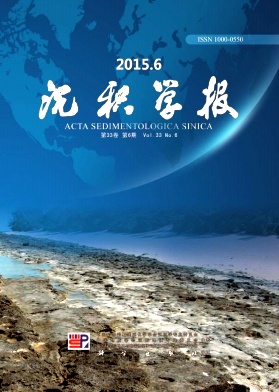Characteristics and Genesis of Grape-like Stone of Dolomite in Sinian Dengying Formation in Yangtze Region:A case from the First section of Dengying Formation in Yangba, Nanjiang, Sichuan Province
doi: 10.14027/j.cnki.cjxb.2015.06.004
- Received Date: 2014-07-03
- Rev Recd Date: 2014-09-10
- Publish Date: 2015-12-10
-
Key words:
- grape-like structure /
- grape-like stone /
- dolomite /
- genesis /
- Dengying Formation
Abstract: There is a special and extensively developed type of dolomite in Dengying Formation and its corresponding formations of Upper Sinian in Yangtze region, which is with an odd-looking like renal globule, ellipsoid, grape-like body and sphere in irregular shape(hereinafter referred to as the "grapes"). Many scholars in China believed that this kind of dolomite was affected by atmospheric fresh water during formation. "Grapes" are like pieces of tufa on the macro, distributed along interfaces of rock strata and fractures. On the basis of the detailed observation and description of outcrops, and using polarized light microscope, cathodoluminescence and scanning electron microscopy(SEM), the characteristics and genesis of grape-like dolomite in the First section of Sinian Dengying Formation in Yangba Town of Nanjiang County, were studied. The results show that the grapes were as the fillings in surrounding rocks through diagenetic ways into rocks. The grapes are usually like hemispheroids with cores and alternated dark and bright shells, and composed mostly of dolomite and a little of authigenic quartz. The cores and dark shells were formed from biological and chemical processes in sea water, according to the algal binding aggregates with irregular microbial filaments, high carbon elements in the mineral components, and in combination with the existence of the seabed hard ground. The bright shells were composed by fiber cements, which in the same thickness and formed the outer layers of grapes. Grapes are with polyhedral intersection and filled with fiber cements in the residual space, so the outer of grapes are forming in marine phreatic water and mainly due to cementation. Cores were the irregular bumps on the wall of dissolution holes and seams, the characteristics of grapes were closely related to the size and shape of bumps and the features of growth space. The fixed point and regular structure indicate that grapes were formed in stable water. Aragonite or high-magnesian calcite was the original component, because of the dolomitization, the grape-like dolomite was formed and with crystalline-granular texture. The characteristics cathode luminescence of grapes are similar to surrounding rocks, and according to the occurrence and the morphological characteristics of the grapes, the hemispheroids with cores and alternated dark and bright shells are identified as an sedimentary structure and named grape-like structure. The sedimentary structure is a deposition-diagenetic structure and due to biological and chemical effect, and formed in the stable sea environment.
| Citation: | MOU ChuanLong, WANG XiuPing, LIANG Wei, WANG YuanChong, MEN Xin. Characteristics and Genesis of Grape-like Stone of Dolomite in Sinian Dengying Formation in Yangtze Region:A case from the First section of Dengying Formation in Yangba, Nanjiang, Sichuan Province[J]. Acta Sedimentologica Sinica, 2015, 33(6): 1097-1110. doi: 10.14027/j.cnki.cjxb.2015.06.004 |






 DownLoad:
DownLoad: